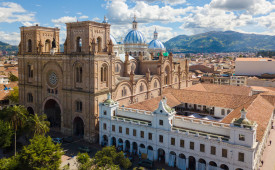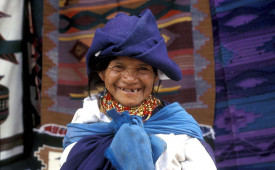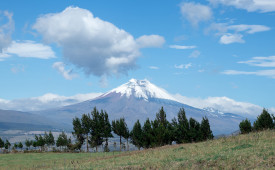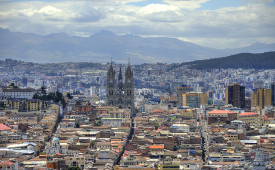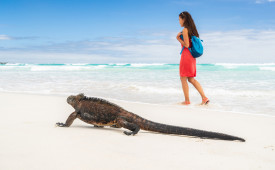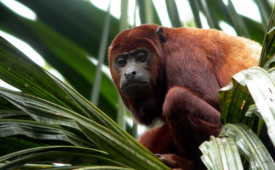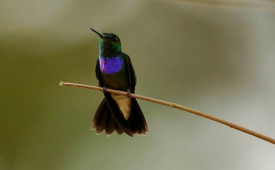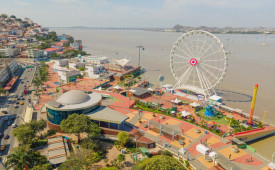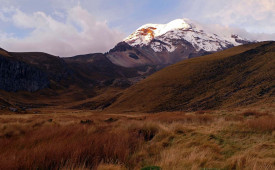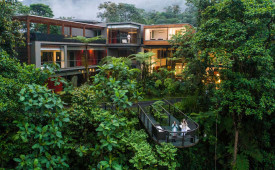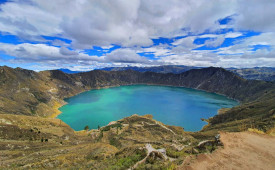-
Latin America
Latin America
- Countries (hidden space)
- Galapagos & Ecuador
- Guatemala
- Mexico
- Panama
- Peru
- Popular Attractions
- Machu Picchu
- Inca Trail
- Easter Island
- Galapagos Islands
- Patagonia
- Rio de Janeiro
- Iguazu Falls
-
Africa
Africa
- Spacer Africa
- South Africa
- Zimbabwe
- Popular Attractions
- Cape Town
- Okavango Delta
- Sossusvlei Dunes
- Victoria Falls
- The Kruger
- The Garden Route
- Masai Mara
-
Asia & Middle East
Asia & Middle East
- Asia
- Borneo (Malaysia)
- Cambodia
- India
- Japan
- Middle East
- Jordan
- Spacer Asia
- Laos
- Sri Lanka
- Uzbekistan
- Vietnam
- Popular Attractions
- Taj Mahal
- Lion Rock (Sigiriya)
- Angkor Wat
- Ha Long Bay
- Kyoto
- Petra
-
Destinations
- Latin America
- Argentina
- Bolivia
- Brazil
- Chile
- Colombia
- Costa Rica
- Galapagos & Ecuador
- Guatemala
- Mexico
- Panama
- Peru
- Asia
- Borneo (Malaysia)
- Cambodia
- India
- Japan
- Laos
- Sri Lanka
- Uzbekistan
- Vietnam
- Middle East
- Jordan
- Southern & East Africa
- Botswana
- Kenya
- Namibia
- South Africa
- Zimbabwe
- Contact Us
-
About
About
Llama Travel provides high quality holidays at the lowest possible prices.
99% recommend us Lower prices - guaranteed Financially protected by ATOL
Travelling to Galapagos & Ecuador
Travelling in Galapagos & Ecuador
-
Budgeting for your stay
All hotels include breakfast, and other meals are included on some tours and excursions. However, generally, you will need to arrange your own lunches and dinners. We recommend budgeting approximately US$15 – 20 for a meal, although many restaurants have excellent value set lunches for less than this. Hotel restaurants, especially in superior hotels, can be more expensive, as can meals in restaurants on the Galapagos Islands. Additionally, there are some upmarket restaurants in cities where you should expect to pay up to US$50 per person, or possibly more. However, these still offer excellent value for money compared to equivalent restaurants in the UK.
Bar prices on the mainland are similar to the UK, or slightly cheaper, and a small bottle of beer usually costs around US$2-3 in a hotel bar. Wine, particularly imported wine, can be quite expensive. On Galapagos boats, bar prices are usually higher than on the mainland, particularly for wine.
We find that many people take advantage of the excellent crafts markets in and around Quito, so please allow for this if you are likely to buy such items. The prices vary significantly depending on the quality of the items, and detailed crafts can be expensive.
-
Food
Quito has many good restaurants with a wide range of national and international cuisine. Many of the best restaurants are located in the new town. Ingredients from the jungle, the Andes and the coast allow for an interesting mix of dishes. Sometimes, traditional restaurants are only open from noon to 3pm.
Although it does not have as many options as Quito, Cuenca has a good variety of restaurants and cafes serving both local and international cuisine. The locals are fond of sweet food, particularly ice cream, and there are many good cafes near the main square catering for this market. There are also a number of restaurants in central Guayaquil and on the promenade, although many of the best restaurants are located in the malls and entertainment centres away from the centre.
-
What to pack - Ecuador
In Quito, daytime temperatures tend to be around 20°C and night time temperatures around 10°C. The weather in the Avenue of the Volcanoes, Riobamba and Cuenca is similar to Quito. Temperatures in the jungle and Guayaquil tend to be hot and humid year round, although cold snaps are also possible. Therefore, a variety of clothing, suitable for warm and cooler weather is advisable. Rain is possible throughout the year, so waterproofs are also recommended. Insect repellent is advisable, especially for the jungle, the Bellavista cloud forest and for the Galapagos Islands.
Sturdy footwear is advisable for the Galapagos Islands, as some paths can be rocky and uneven. If you are visiting the Bellavista cloud forest, the trails can be muddy and sometimes they are slippery. Therefore, please take appropriate footwear.
The hottest months in the Galapagos Islands are usually December – May, when temperatures can rise above 30°C, although it tends to be wettest then. Sea temperatures are also at their warmest, around 25°C (although the temperature can vary significantly between different islands). From June – December, temperatures are usually cooler (around 25°C), but it rains less. It is often misty at this time of year. Sea temperatures also tend to be cooler, around 20°C. Dress on board the cruise boats is informal, so formal dress is not required.
Electricity in Ecuador is 110V, and plugs are of the flat two-pin type.
Having a copy of your passport with you at all times is recommended.
Please bring any medication you may require from the UK.
-
Money
The official currency in Ecuador is the US dollar. Travellers should take US dollars and not UK sterling, which is not widely accepted in any form. Credit and debit cards (both Visa and MasterCard are generally accepted) can be used in many shops and restaurants, and can be used to withdraw money from cash machines. It can be difficult to use dollar notes which have even the smallest tear. Some places do not accept US$100 bills, so it is best to take smaller denomination notes. When travelling to some of the more remote areas (e.g, the jungle), it is advisable to take cash, as it is difficult to withdraw or change money. If taking travellers cheques, a high commission may be charged. Some hotels do not change travellers cheques so you may need to change them in a bank or exchange shop, therefore, please bear in mind opening hours.
It is always recommended to inform your bank that you are travelling abroad and to which countries. This will allow them to authorise money withdrawals on your account when you are away. Some banks say that this is not necessary; however, we would still recommend contact with your bank as in some cases people have had difficulty in withdrawing currency.
On most small boats in the Galapagos, you can only pay in cash. Some larger boats also take credit cards.
-
Tipping
If you receive good service, you may want to leave a tip. This is completely at your discretion. For general excursions, if you want to tip guides, US$2 – 3 per person per day is usual if you are in a group. Approximately US$1 is usual for drivers or transfer staff. As tipping is not necessarily normal in restaurants, please give any tips directly to the person you would like to tip to ensure that they get it.
Tipping your Galapagos boat crew and guides on board is expected and is usually well deserved. For yachts up to 16 passengers, and the Hotel Finch Bay tours, approximately US$15 – 20 per person per day is recommended. For larger yachts, US$23-25 is normal.
If you would like to tip your guide in the jungle, approximately US$10 per person per day is recommended. This is divided between the guides and the staff.
About the Galapagos
-
Galapagos geography
The Galapagos Islands are in the Pacific Ocean 1,000km west of Ecuador. Flights to and from Quito take 3 hours, with a brief stop in Guayaquil.
-
When to Go
The Galapagos can be visited year round and wildlife can be seen all year. Between January to May the weather is hotter, but wetter, and the sea temperature tends to be warmer. During this time the average daytime temperate is between 27-31°C and the sea temperature is around 25°C. June to December is drier, but cooler. The average daytime temperature ranges between 21-26°C and the sea temperature is around 21°C. It is often overcast at this time of the year, especially in July and August. The seas around the Galapagos tend to be fairly calm all year around, however the choppiest time to visit is around September. Some birds are only present at certain times of the year; if you would like to see a specific bird, please ask us for details.
-
Packing for the Galapagos
•Lightweight clothing, including shorts and t-shirts. Long-sleeved shirts and trousers are useful on board as there is air conditioning.
•Swimming costume.
•Sandals and trainers.
•Prescription snorkelling mask if required.
•A sun hat.
•Waterproofs (a plastic poncho is often the best thing).
•Sunglasses.
•Binoculars/camera gear.
•Water bottle.
•Sun cream and insect repellent.
•Day pack for island excursions.
•Ear plugs for night-time sailing.
•Biodegradable soap and shampoo are provided. If you would like to use your own, please ensure this is also biodegradable.
-
Galapagos National Park Entrance Fee
The Galapagos National Park entrance fee of US$100 and the transit tax of US$20 are included in all our holidays.
-
Aboard the Boat
All boats Llama Travel works with have excursions carried out in small groups (maximum 16 passengers) led by a naturalist guide.
Breakfast, lunch and dinner are served in the dining area, and drinking water, tea and coffee are provided. There is also a bar service available.
Electricity onboard is 110V and plugs are of the flat two-pin type. There are small safes in each cabin or in the captain’s cabin. There are no hairdryers in cabins on most boats.
Smoking is not permitted inside the boats and is only permitted on deck.
Dress on board is informal on all boats.
-
Galapagos Itineraries
Itineraries are fixed by the Galapagos authorities and usually cannot be varied. However, these are subject to change by the park authorities at short notice and can be affected by local conditions, airport closures or other factors. The activities at each site specified in the itineraries may vary and will be determined by the guide. Some longer cruise itineraries are made up of 2 shorter cruises, and so some guests may start or end their cruise on these changeover days. On all cruise itineraries, you visit a range of different islands, allowing you to see the land and marine animals and birdlife. The Finch Bay itinerary includes visits to several visitor sites in the central islands.
-
About the Guides
All guides in the Galapagos Islands are registered with the National Park. All Llama Travel holidays include experienced naturalist guides who speak English.
-
Snorkelling equipment and wetsuits
For many people, the highlight of the visit to the Galapagos is snorkelling among the sea life, including sea lions, turtles, penguins, rays and sharks. Snorkelling equipment is available for rent,
or you can take your own. If you need a mask with prescription lenses, it is best to get this before you leave. Wetsuits are also available for hire. Please ask us if you are interested in hiring a wetsuit. If you do not want to snorkel, it is sometimes possible to remain on the beach on the island. However, at some sites visited on cruises this is not possible, in which case you will stay on board your boat. -
Wet and Dry Landings
You explore the visitor sites, seeing the wildlife, flora and geology at very close quarters. Most excursions require some walking, often on rocky and uneven surfaces, so a reasonable level of fitness is required. To reach the islands it is necessary to go from your boat in a panga, a small dinghy. On a dry landing, you will step out of the panga onto rock. On a wet landing, you will step out of the panga into about a foot of water, from where you will wade to land.
-
Sailing at Night
Sailing between the islands is usually done in the early morning or late evening. However, for some of the longer distances, the journey can be made at night. In this case, there is usually more movement and the noise of the motor can be heard.
-
Money
On the smaller yachts, you can only pay in cash. On the larger boats, you can usually pay by cash or credit card. Travellers cheques are not widely accepted on any of the boats. There are banks and cash machines in both Puerto Ayora on Santa Cruz and Puerto Baquerizo Moreno on San Cristobal.
-
Tipping
Tipping the boat crew and guides on board is usually well deserved, and expected. If you feel you have received good service, the following are the suggested tipping levels per passenger per day: San Jose and Galapagos Beagle, approximately $15 - 19. MV Santa Cruz II and La Pinta, approximately $25. Galapagos Odyssey, approximately $20 - $22. Hotel Finch Bay, approximately $19.
-
Shopping
There is a small boutique shop on board the larger ships and there is also the chance to shop at Puerto Ayora or Puerto Baquerizo Moreno. However, it is best to buy anything that you will need before visiting the islands.
-
Nightlife and Entertainment
Entertainment on board is quite limited, although the larger ships have bars and may have music at times. It is sometimes possible to disembark in Puerto Ayora or Puerto Baquerizo Moreno, where there are restaurants and bars.
-
Airport Transfers
Airport transfers are included to your Galapagos cruise. If you are landing at Baltra airport, an excursion to the Santa Cruz highlands is often included. This is usually prior to boarding your boat, so we recommend having appropriate footwear and clothing handy for this excursion, as your main luggage will usually be taken straight to your boat.
Transfers are also included for hotel stays in Puerto Ayora on Santa Cruz. These are with a driver only, usually with limited English.
It is sometimes possible to get a Galapagos stamp in your passport when you arrive at the Galapagos airport, so please ask for this if you would like this.
-
Vaccinations and Medical Requirements
No specific vaccinations further to those required for Ecuador are required for visiting the Galapagos Islands. However, please consult your GP or a travel clinic for up-to-date medical advice. As you may feel the movement of the boat, we recommend you bring any sea sickness medication you will require. We recommend bringing any painkillers or medication for upset stomachs and rehydration sachets in case you have a problem on board, as these can be hard to get in the Galapagos Islands.
Although the excursions are not physically demanding, they do require walking on uneven surfaces, and this can be under the hot sun. Therefore, a reasonable level of fitness is required.
Larger ships (48 passengers and up) usually have a medical officer on board, although facilities and treatments are quite simple. Smaller boats have basic first aid. If you require more serious medical attention, there are hospitals on the islands of Santa Cruz and San Cristobal.

